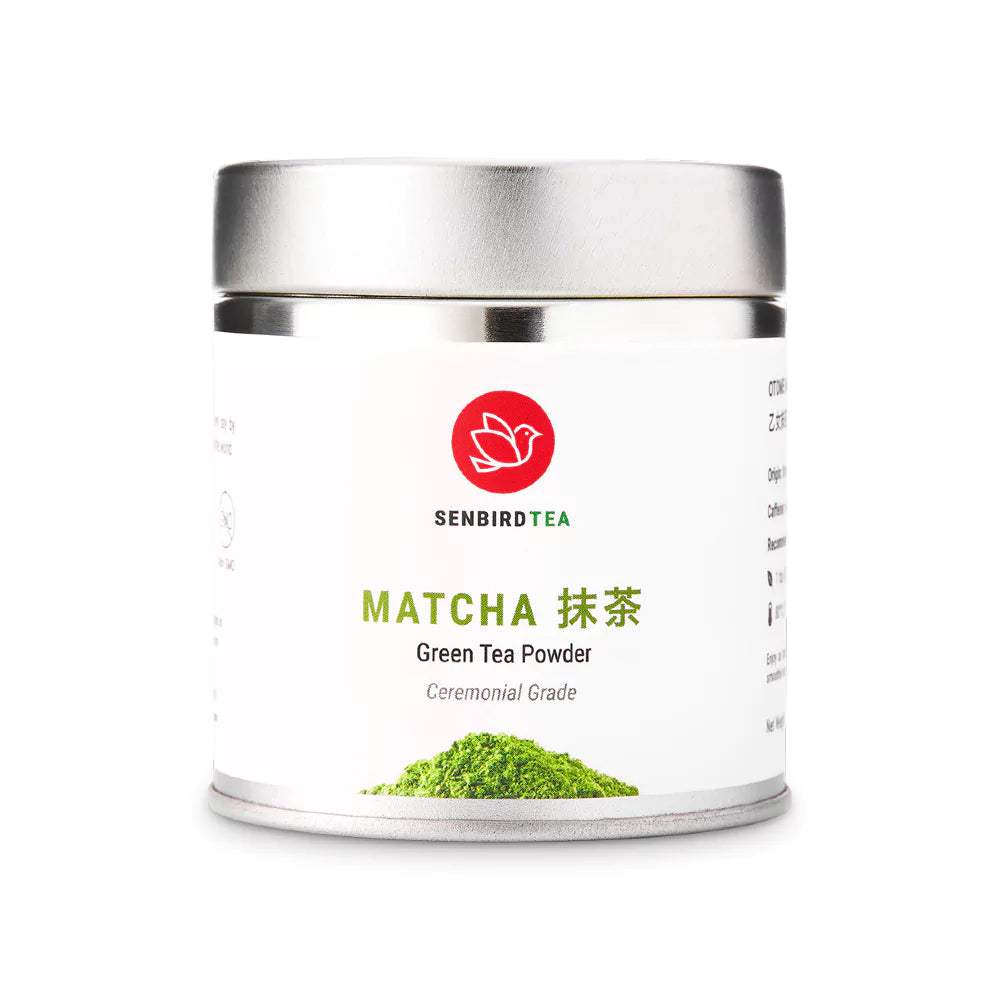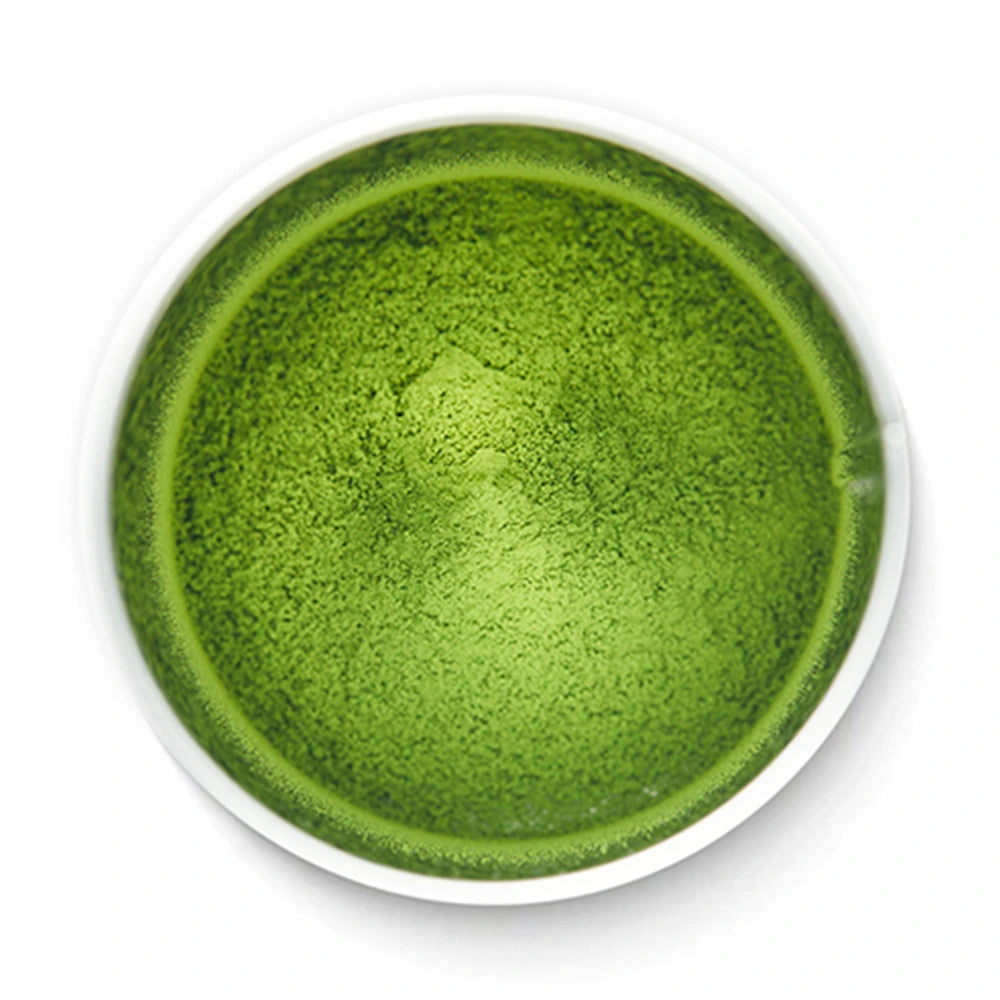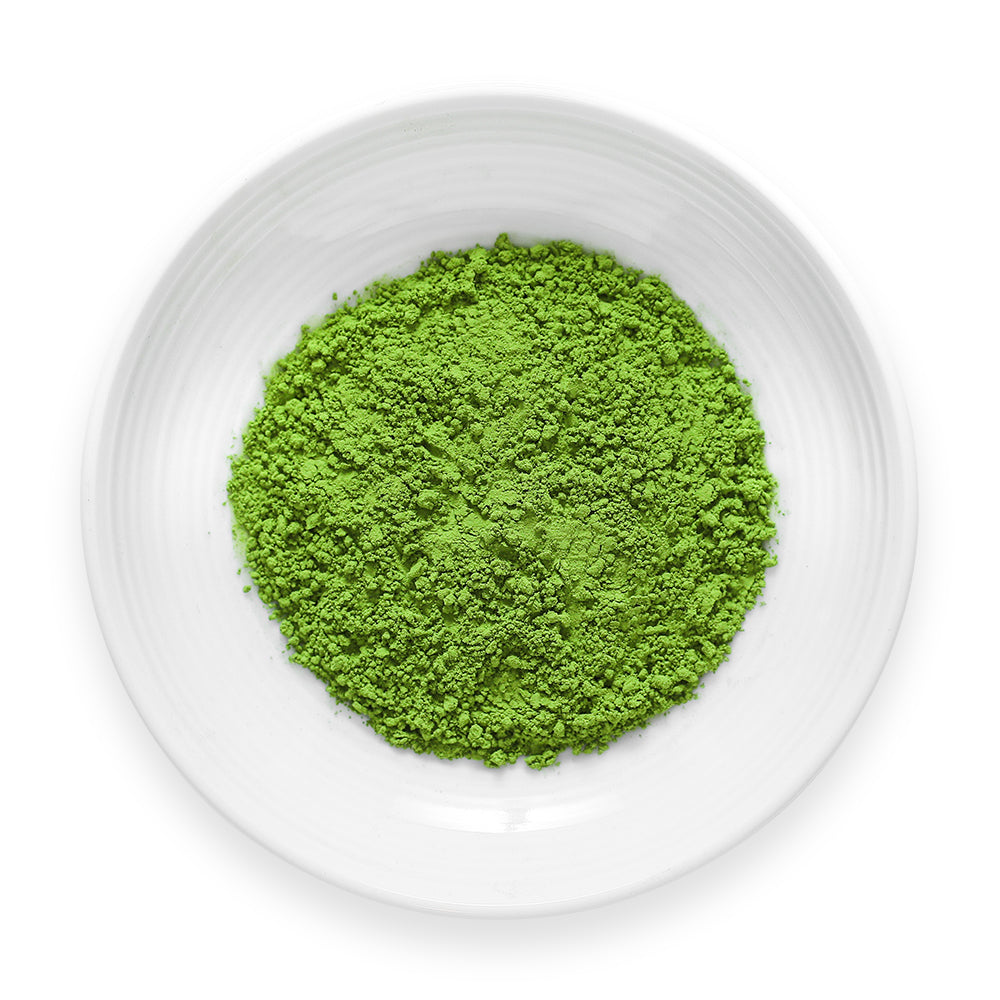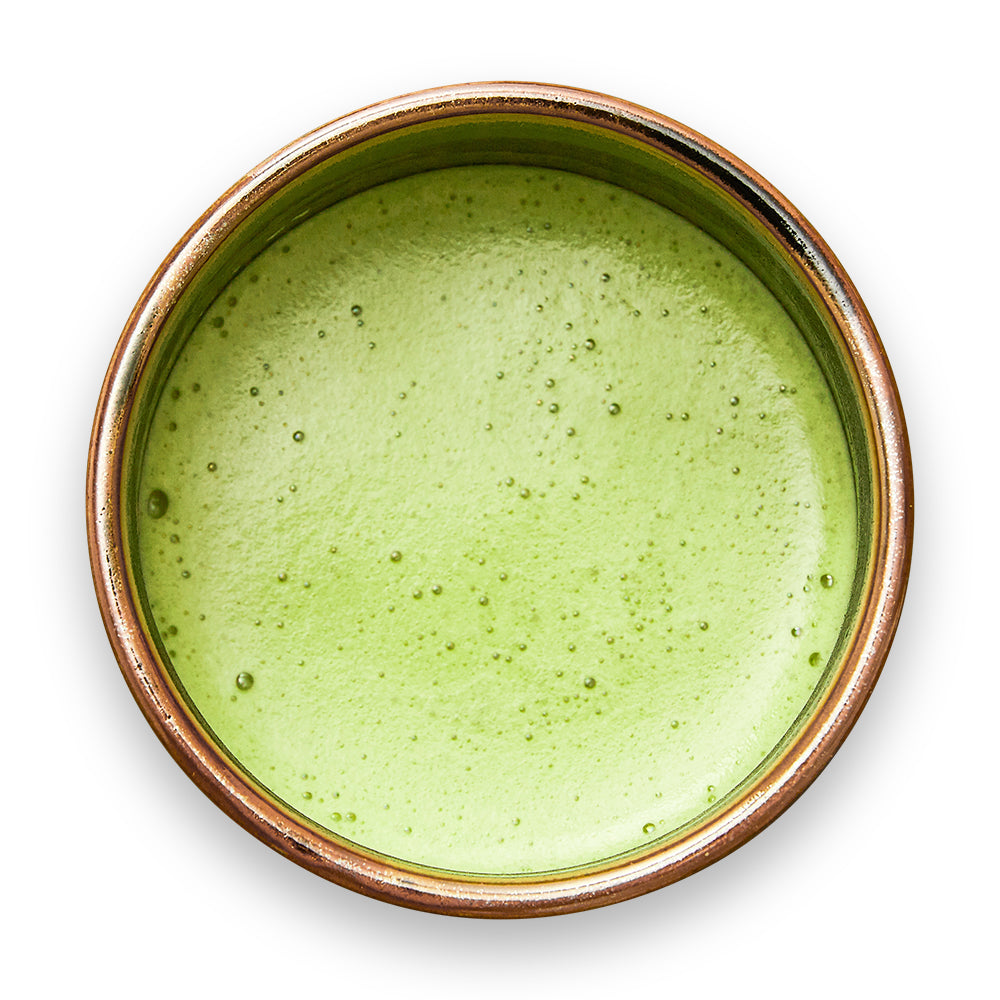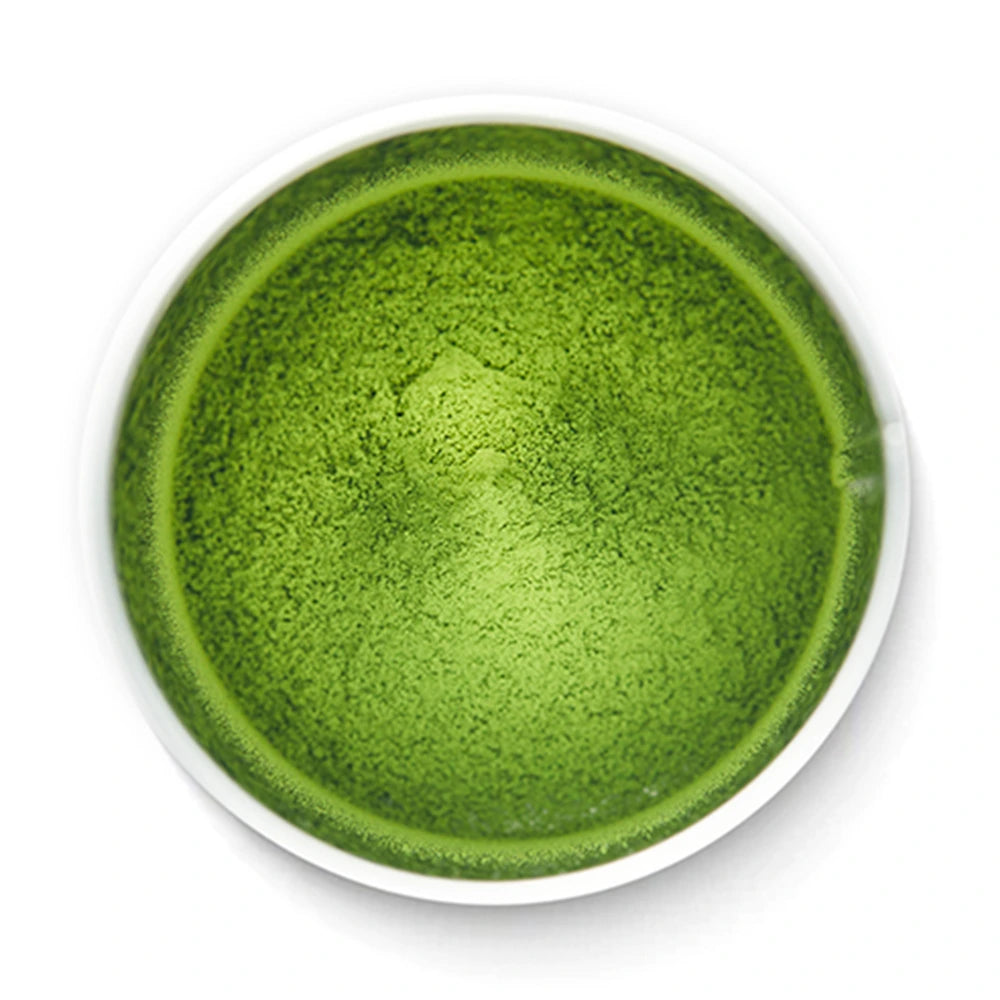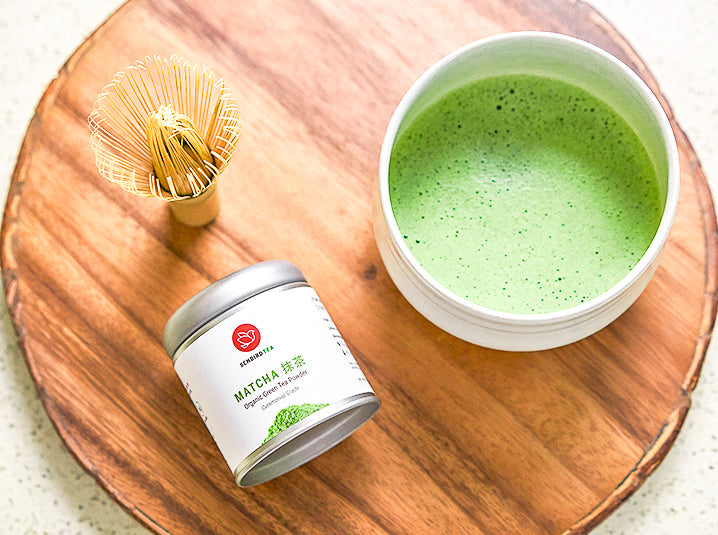
How to Prepare Matcha: Usucha vs. Koicha
Matcha, the finely ground powdered green tea, has deep roots in history. It originated from the practices of Chinese Zen Buddhist monks, who used it as a meditative aid. Over 800 years ago, matcha was introduced to Japan, where it became an integral part of Japanese tea culture. Today, traditional matcha preparation techniques continue to be practiced in tea ceremonies, emphasizing mindfulness and appreciation.
One of the most significant aspects of the Japanese tea ceremony, known as Chanoyu (茶の湯) or "The Way of Tea," is the preparation of matcha using time-honored methods. There are two primary ways to prepare matcha: Usucha (薄茶), or “thin tea,” and Koicha (濃茶), or “thick tea.” Each method creates a unique tasting experience and offers a different way to enjoy the rich umami flavors of matcha green tea.

What is Usucha (薄茶) "Thin Tea"?
Usucha, meaning "thin tea," is the most common way to prepare matcha. This style produces a lighter, frothy tea with a smooth, mellow taste and a slightly sweet, umami-rich flavor. If you’ve ever enjoyed a matcha latte or matcha bubble tea, it was likely made using the Usucha matcha preparation method. Watch our video guide on how to prepare Usucha, or follow the steps below:
How to Prepare Usucha (薄茶) Matcha Green Tea
-
Sift 2 Chashaku (1 tsp / 2g) of high-quality matcha powder into a Chawan (tea bowl) to remove clumps.
-
Heat 70ml of water to 176°F (80°C) and pour it into the Chawan.
-
Whisk vigorously in a fast "W" motion using a Chasen (bamboo whisk) until a layer of fine foam appears on the surface.
Enjoy your smooth and frothy cup of matcha!
Pro Tip: Before whisking, warm your Chawan (matcha bowl) and Chasen (bamboo whisk) with hot water and wipe them dry. This ensures an optimal temperature and a smooth whisking experience. The trick to good whisking is using only your wrist, not your arm.
Now, matcha is available worldwide, and the creativity in using matcha is endless whether that's as a drink or in desserts or foods! Therefore for your next matcha beverage, consider trying a matcha latte, matcha bubble tea, or even a sweet treat like a vanilla matcha hot chocolate. Here are five unique matcha green tea drink recipes to try.
What is Koicha “Thick Tea”?
Koicha, known as “thick tea”, is a different method of preparing matcha that creates a syrupy viscosity. Notably, Koicha uses double the amount of matcha to the equivalent amount of water.
In essence, the high matcha powder to water ratio and preparation technique results in a thicker consistency compared to Usucha. Hence, Koicha tea is generally not for beginner matcha drinkers as it takes time to get familiar with the texture and stronger umami flavor. With enough experience, you'll be able to recognize and savor the natural underlying sweetness in different grades and types of matcha.
The grade of the matcha determines the quality and taste of the Koicha. In fact, unlike Usucha, Koicha comes from leaves of trees that are at least 30 years old. The older trees contribute to the sweetness and full-bodied umami flavor of the matcha tea leaves. The older the tree, the higher grade the matcha is.
Ceremonial grade matcha is considered higher quality and is recommended for traditional tea ceremony use or for those looking to enjoy matcha as Koicha.

How to Prepare Koicha (濃茶) Matcha Green Tea
Typically, Japanese tea ceremonies prepare Koicha for drinkers to enjoy the rich texture and complex flavors of the matcha since the umami is more prominent. It is definitely worth trying traditional Koicha matcha preparation techniques the next time you drink your matcha green tea! Watch our video guide on how to prepare Koicha, or follow the steps below for a thick and luxurious matcha experience:
- Sift 4 Chashaku (2 tsp / 4g) of ceremonial-grade matcha into a Chawan.
- Heat 50ml of water to 176°F (80°C) and pour it into the bowl.
- Knead the matcha gently using a Chasen, moving it in slow, circular motions rather than whisking rapidly.
- Enjoy the thick, syrupy matcha, which should have a consistency similar to warm honey.
Pro Tip: For the most part, instead of rapid whisking in a W pattern for Usucha preparation, practice applying a slower kneading action. With this in mind, create thick matcha with smooth consistency resembling the viscosity of warm honey.
Pairing Tip: Koicha is best enjoyed alongside Wagashi (和菓子), traditional Japanese sweets that balance the tea's bold umami flavors.
Usucha vs. Koicha: Which One Should You Try?
Both Usucha and Koicha offer distinct experiences. If you’re new to matcha, start with Usucha for a lighter, easy-drinking tea. For seasoned matcha enthusiasts, Koicha is a must-try to fully appreciate the depth of flavor that high-grade matcha provides.
|
FEATURE |
USUCHA (薄茶) |
KOICHA (濃茶) |
|---|---|---|
|
Texture |
Light & frothy |
Thick & syrupy |
|
Matcha Ratio |
1 tsp (2g) per 70ml |
2 tsp (4g) per 50ml |
|
Whisking Style |
Fast "W" motion |
Slow kneading |
|
Flavor Profile |
Smooth, mellow, umami |
Rich, deep, intense umami |
|
Best For |
Everyday drinking, lattes |
Traditional tea ceremonies, experienced drinkers |
How is Matcha Made?
The process of making matcha is meticulous and deeply rooted in Japanese tradition. Unlike other green teas, matcha is made from Tencha (碾茶) leaves, which are shade-grown for about three weeks before harvest. This process increases chlorophyll and amino acid content, giving matcha its vibrant green color and umami-rich taste. Learn more about how matcha green tea powder is made in Japan.

Matcha Production Process:
- Shade-growing slows photosynthesis, enhancing the tea’s natural sweetness.
- Hand-picking ensures only the best leaves are selected.
- Steaming stops oxidation while preserving nutrients and color.
- Drying & Grinding—Leaves are deveined, destemmed, and ground into a fine powder using traditional stone mills.
Why Matcha Quality Matters:
- Ceremonial-grade matcha is best for traditional preparation methods like Koicha.
- Culinary-grade matcha is ideal for lattes, smoothies, and baking.
Matcha is more than just a tea—it’s a tradition, an experience, and a moment of mindfulness in every cup. Whether you prefer the light frothiness of Usucha or the rich intensity of Koicha, exploring traditional matcha preparation techniques will deepen your appreciation for this remarkable green tea. Try both styles and discover which matcha ritual suits your taste and lifestyle best!
Looking for high-quality matcha? Explore our collection of ceremonial-grade matcha and curated selection of handcrafted matcha utensils and tools, perfect for Usucha, Koicha, and beyond.
🍵 Did you make usucha matcha or koicha matcha? Snap a pic and tag us on Instagram at @senbirdtea or #senbirdtea. We’d love to see your creation!
If you want to read more articles on matcha, check them out here:
- 5 Unique Matcha Drink Recipes
- Matcha vs Coffee: Is Matcha Better than Coffee?
- How to Make Matcha Lemonade
- How to Make Matcha Banana Bread
- Strawberry Cream Matcha Shortbread
- Matcha Gin Tonic Cocktail Recipe
- Matcha Cupcakes with Matcha Cream Cheese Frosting
- Guide to Make Iced Matcha Green Tea Latte
- Matcha Bubble Milk Tea Recipe
- Vanilla Matcha Hot Chocolate Recipe
- Matcha Milk And Honey Bread Recipe
- Matcha Strawberry Jam Recipe
- Matcha Shortbread Cookies with Milk Glaze
Share your moment with us and stay connected on:
